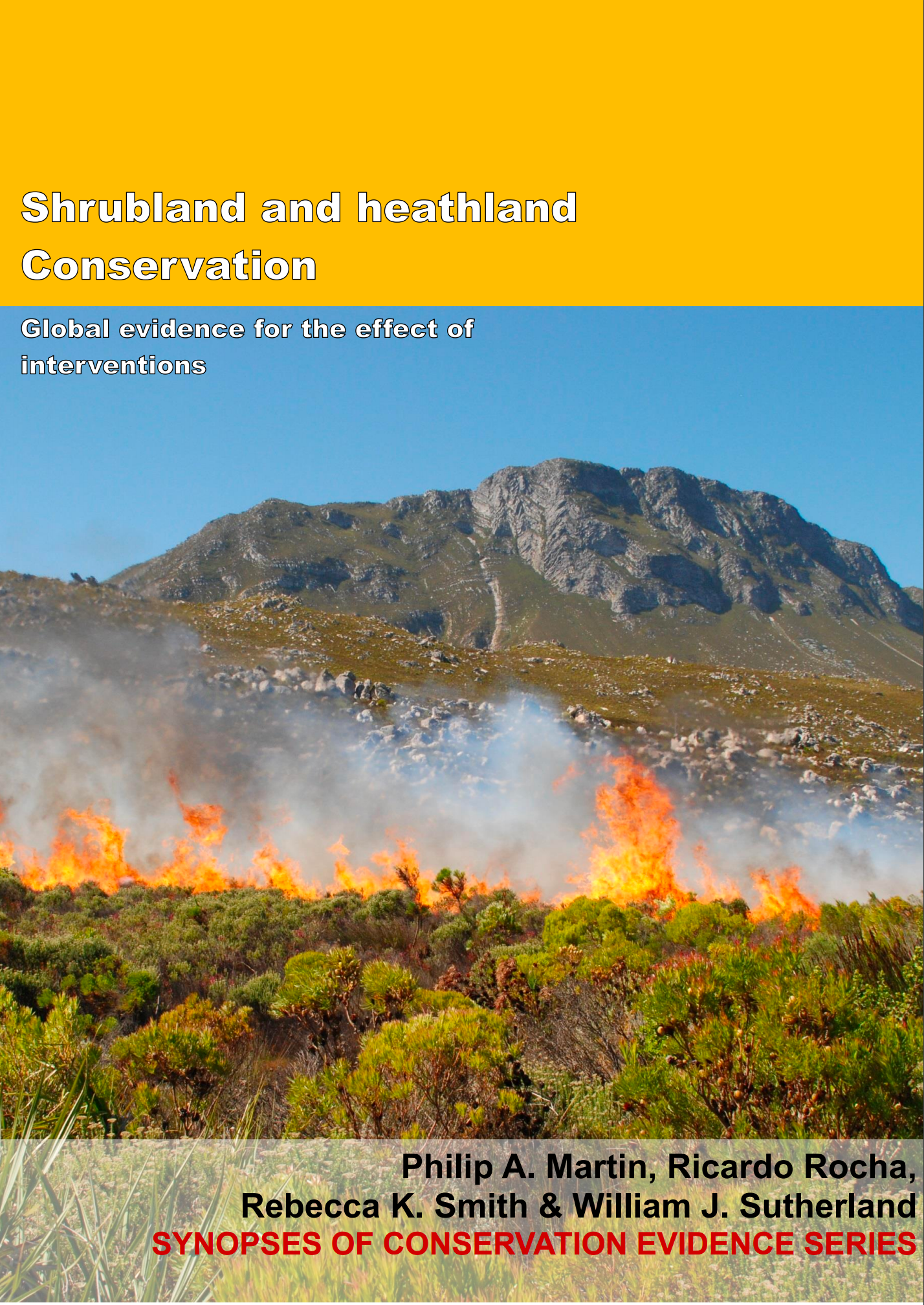Add topsoil
-
Overall effectiveness category Likely to be beneficial
-
Number of studies: 4
View assessment score
Hide assessment score
How is the evidence assessed?
-
Effectiveness
67% -
Certainty
45% -
Harms
0%
Study locations
Supporting evidence from individual studies
A randomized, controlled study in 1988–1993 in former heathland in Dorset, UK (Pywell et al. 1995) found that stripping soil followed by adding topsoil from a nearby heathland increased the number of seedlings for five of seven heathland species after one year, and increased the abundance of four of six heathland species after three years. For five of seven heathland species the number of seedlings in plots where soil was stripped and topsoil was added (1–286 seedlings/m2) was higher than in plots where soil was not stripped and topsoil was not added (0 seedlings/m2). The abundance of four of six heathland plant species was higher in plots where soil was stripped and topsoil was added (1–43 shoots/m2) compared to plots where soil was not stripped and topsoil was not added (0–4 shoots/m2). In 1989 topsoil at a nearby mature heathland site was stripped to a depth of 5 cm. Between 11 and 12 tonnes of topsoil were applied to three 500 m2 plots and mixed using a rotary cultivator and in three plots no topsoil was added. In 1990–1991 the number of seedlings was recorded in seven 0.5 m x 1 m quadrats which were placed in each plot. In 1993 the number of plant shoots was recorded in three 1 m2 quadrats which were randomly placed in each plot.
Study and other actions testedA controlled study in 2006 in Karoo shrublands in Namibia (Burke 2008) found that addition of topsoil to areas damaged by excavation increased the number of plant species and plant cover, but these were lower than found at a nearby undisturbed shrubland. The number of plant species was higher in areas where topsoil was added (5 species) than in areas where topsoil was not added (2 species), but was not as high as in undisturbed shrubland (15 species). Areas where topsoil was added also had higher vegetation cover (15%) than areas where topsoil was not added (1%) but vegetation cover was higher in undisturbed shrubland (28%). Two previously excavated areas were restored in 2006 by using a bulldozer to add topsoil. Four previously excavated areas did not have topsoil added. The previously excavated areas and nearby undisturbed shrubland were surveyed in October 2006 using a minimum of thirty 1 m2 quadrats in each area.
Study and other actions testedA replicated, site comparison study in 2008 of 31 former coal mines in northern Spain (Alday et al. 2011) found that adding topsoil increased the abundance of woody plant species. The 26 sites where topsoil had been added contained more woody species, and resembled later succession sites (see Alday et al, 2011 for details) than those where no topsoil was added (data reported as model results). The five mines where no topsoil was added were dominated by herbaceous species (e.g. Lettuce Lactuca spp., Skeletonweed Chondrilla spp.). Thirty one open-cast mines were selected. They varied in age since abandonment between one and 40 years. At 26 of these sites topsoil had previously been added, while at five sites no restoration had been carried out. At each mine ten 1 m2 quadrats were located randomly and the percentage cover of all plant species assessed once in 2008.
Study and other actions testedA randomized, controlled study in 1988–2005 in former heathland in Dorset, UK (Pywell et al 2011) found that stripping soil followed by adding topsoil from a nearby heathland increased the cover of heathland species and forbs, and reduced the cover of grasses after 17 years. The cover of heathland species and forbs was higher in plots where topsoil was added (heathland: 82%, forbs: 87%) than in plots where it was not (heathland: 16%; forbs: 27%). Grass cover was lower in plots where topsoil was added (16%) than in plots where it was not (59%). In 1989 topsoil at a nearby mature heathland site was stripped to a depth of 5 cm. Topsoil of three 500 m2 plots was removed and heathland topsoil spread, while in three plots no topsoil was spread. In 2005 the cover of plants was recorded in four 1 m2 quadrats which were randomly placed in each plot.
Study and other actions tested
Where has this evidence come from?
List of journals searched by synopsis
All the journals searched for all synopses
This Action forms part of the Action Synopsis:
Shrubland and Heathland Conservation
Shrubland and Heathland Conservation - Published 2017
Shrubland and Heathland synopsis





)_2023.JPG)














